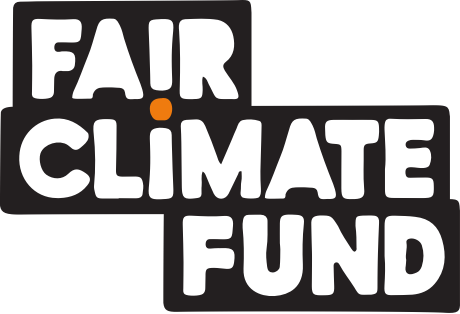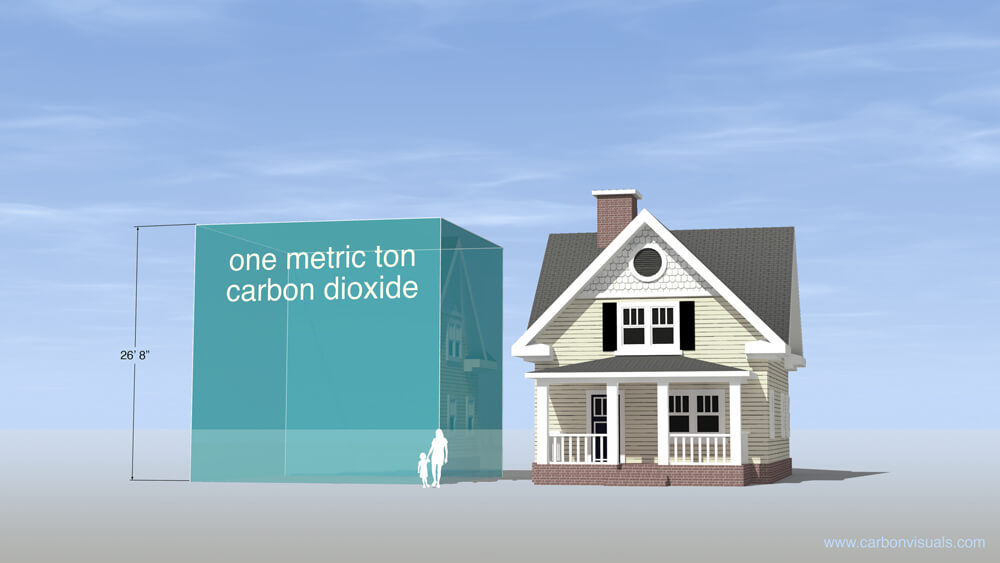Carbon Footprint Calculator
Calculate your flight's CO2 and offset directly
What is the size of a tonne of CO2?
Artist Alfio Bonanno and architect Christophe Cornubert created a demonstration of the volume of a metric tonne of CO2 (1.1 short tons), the amount an average person produces in a month. It was made up of a giant four-sided video projector and was floating on the lake in front of Copenhagen's Tycho Brahe Planetarium during the Convention on Climate Change. Thanks to Marcus Fairs - Dezeen, Treehugger & Carbon Visuals
Frequently Asked Questions about Carbon Offsetting
Unfortunately the aviation industry is excluded from the Paris Climate Agreement. Currently aviation account for two percent of the global CO2 emissions.
The amount of air travel passengers is expected to double in the next twenty year. Air travel technologies aren't keeping up with that growth. Therefore, it's expected that emissions in aviation will increase.
Also your flight contributes to greenhouse gas emissions. But there's a way to compensate for these emissions, namely by carbon offsetting.
While we also hope that electric planes and biofuel technologies will develop soon, it's expected that this will take a few years to decades. To reach climate goals, we should act now. And you can act now by reducing your emissions and offsetting the rest via FlyGRN!
About Carbon Offsetting
Carbon offsetting works (Guardian) with a certain carbon offset scheme that allows individuals and companies to invest in environmental projects around the world in order to balance out their own carbon footprints.
FlyGRN offsets carbon with VCS Certification
To making sure that the carbon is really offset, several certification standards were developed to ensure that carbon is really offset correctly. FlyGRN uses the Verified Carbon Standard (VCS / VERRA)
Artist Alfio Bonanno and architect Christophe Cornubert created a demonstration of the volume of a metric tonne of CO2 (1.1 short tons), the amount an average person produces in a month. It was made up of a giant four-sided video projector and was floating on the lake in front of Copenhagen's Tycho Brahe Planetarium during the Convention on Climate Change. Thanks to Treehugger.
Carbon Offsetting Project Information - Solar Cookers for Refugees in Chad

Country: Chad
Reference Number: GS 1609
Certification standaard: Gold Standard
More than 200,000 Sudanese have fled in recent years as a result of the war in Darfur to neighboring Chad, one of the poorest countries in the world. Through this project, tens of thousands of refugees get the chance to improve their lives enormously with the help of solar cookers.
Since the start of the program in 2005, 50,000 families in refugee camps and surrounding villages have been equipped with solar cookers made of cardboard and aluminum foil that can be used to heat water and to cook. The solar cooker can be used 330 days a year, eliminating the need for firewood almost completely.
About the carbon offsetting project

The solar cookers are an effective alternative to the use of firewood for cooking, and uses solar energy that is available in abundance in Chad. This project not only eliminates the danger to which women and children expose themselves by looking for firewood outside the camp, but also improves the state of health, because cooking is smokeless. In addition, the project strengthens the position of women by giving them an executable role in the project, and without the need to collect firewood, women have more time to do other work and children have time to go to school.
We work together with the Dutch carbon offsetting party Fair Climate Fund (FCF).
Supported Sustainable Development Goals (SDGs)

Prove of retirement of credits:
Carbon Offsetting Project Information - Solar Panel Project India

We currently have no supply for this project
Country: India
Reference: VCS 1670
Certification: VCS
The project activity involves the installation of two solar power plants in the states of Tamil Nadu and Telangana in India. The total installed capacity of the project is 56.25 MW. The electricity generated is fed directly to the regional grid system, displacing energy that would have been generated by fossil fuel based power plants. This project provides employment opportunities during the construction and operation phases as well as demonstrates the technology in the region.
The project activity generates electricity using solar energy. The generated electricity is exported to the regional grid system which is under the purview of the Indian electricity grid of India.
The proposed project activity will support development of renewable energy generation plants based on Solar PV technology in India and delivering electricity to the grid.
Since, the solar power is Green House Gas (GHG) emissions free, the power generated will replace anthropogenic emissions of greenhouse gases estimated to be approximately 93,022 tonnes of CO2e per year, thereon displacing 95,145 MWh/year amount of electricity from the generation-mix of power plants connected to the INDIAN GRID, which is mainly dominated by fossil fuel based power plant.
The total installed capacity of the current project activity is 56.25 MW; which involves operation of two solar power plants in the states of Tamil Nadu and Telangana in India.
Additional Benefits:
- Generation of employment opportunities during the construction and operation of the project
- The project helps reduce the demand - supply gap in the region
- The project will demonstrate the technology in the region
Supported Sustainable Development Goals:

We are currently offsetting with the solar project: VCS 1580, a similar Solar Panel Project in India.




